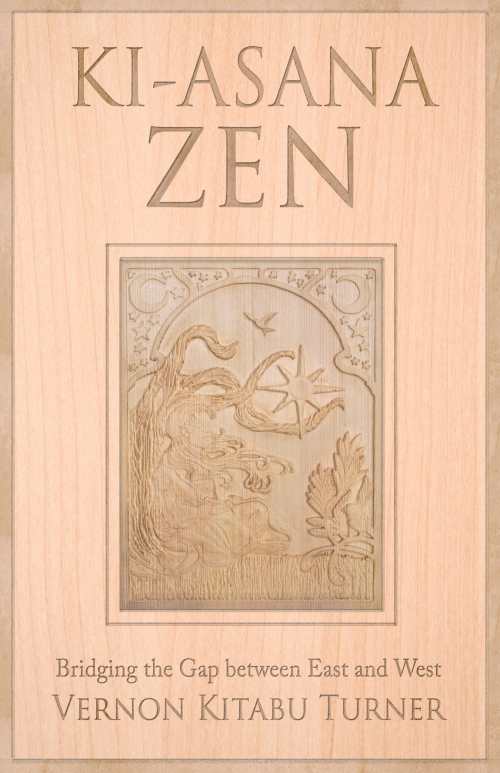Ki-Asana Zen
Bridging the Gap between East and West

Reviewed by Bobbye Middendorf
Embodying diverse traditions, Turner’s new approach deepens Zen meditation practice in the West.
In a compact guide colored with Zen, martial arts, and devotional Bhakti yoga, ordained Christian minister Vernon Kitabu Turner constructs a bridge between East and West. With the author’s new Ki-Asana Zen practice, Western students of meditation and the martial arts will have access to an innovative approach that enhances and supplements Zen and other practices.
Inspired by the samurai tradition at an early age in response to being bullied, Turner, a Christian, became a master of the martial arts. He eventually developed Zen Mushin Ryu, combining intuition with self-defense. Turner was a student of Zen Master Nomura Roshi and experienced “Satori,” enlightenment. Later, Sadguru Sant Keshavadas named Turner his “spiritual son,” in his Bhakti yoga devotional lineage. This teacher charged him with bridging the gap between East and West. It took years, as the book explores the author’s spiritual development and how he began this bridging.
Using personal stories, his own poems, and koan-like aphorisms, Turner invites readers to journey with him. He provides context and backstory for his unusual spiritual path that started in black Christian churches in Virginia during the civil rights era. From critiquing “pseudo meditation” to exploring the meditative possibilities of the tea ceremony, the series of essays contains gem-like insights throughout. “We must look deeper than appearance. Not only must we look deeper than appearance, but we must probe deeper within ourselves.”
Although sitting Zen has been among Turner’s personal practices since 1967, he notes how his Western students fared less well. This inquiry resulted in his insight that brought Ki-Asana Zen to life. In the last third of the book, he explains the process behind Ki-Asana Zen, a supplement to and not a replacement for sincere Zen meditation.
Turner’s book shares an innovative way for deepening Zen meditation practices in the West.Disclosure: This article is not an endorsement, but a review. The author provided free copies of his/her book to have his/her book reviewed by a professional reviewer. No fee was paid by the author for this review. Foreword Reviews only recommends books that we love and make no guarantee that the author will receive a positive review. Foreword Magazine, Inc. is disclosing this in accordance
copies of his/her book to have his/her book reviewed by a professional reviewer. No fee was paid by the author for this review. Foreword Reviews only recommends books that we love and make no guarantee that the author will receive a positive review. Foreword Magazine, Inc. is disclosing this in accordance with the Federal Trade
with the Federal Trade Commission’s 16 CFR, Part 255.
Commission’s 16 CFR, Part 255.






Comments